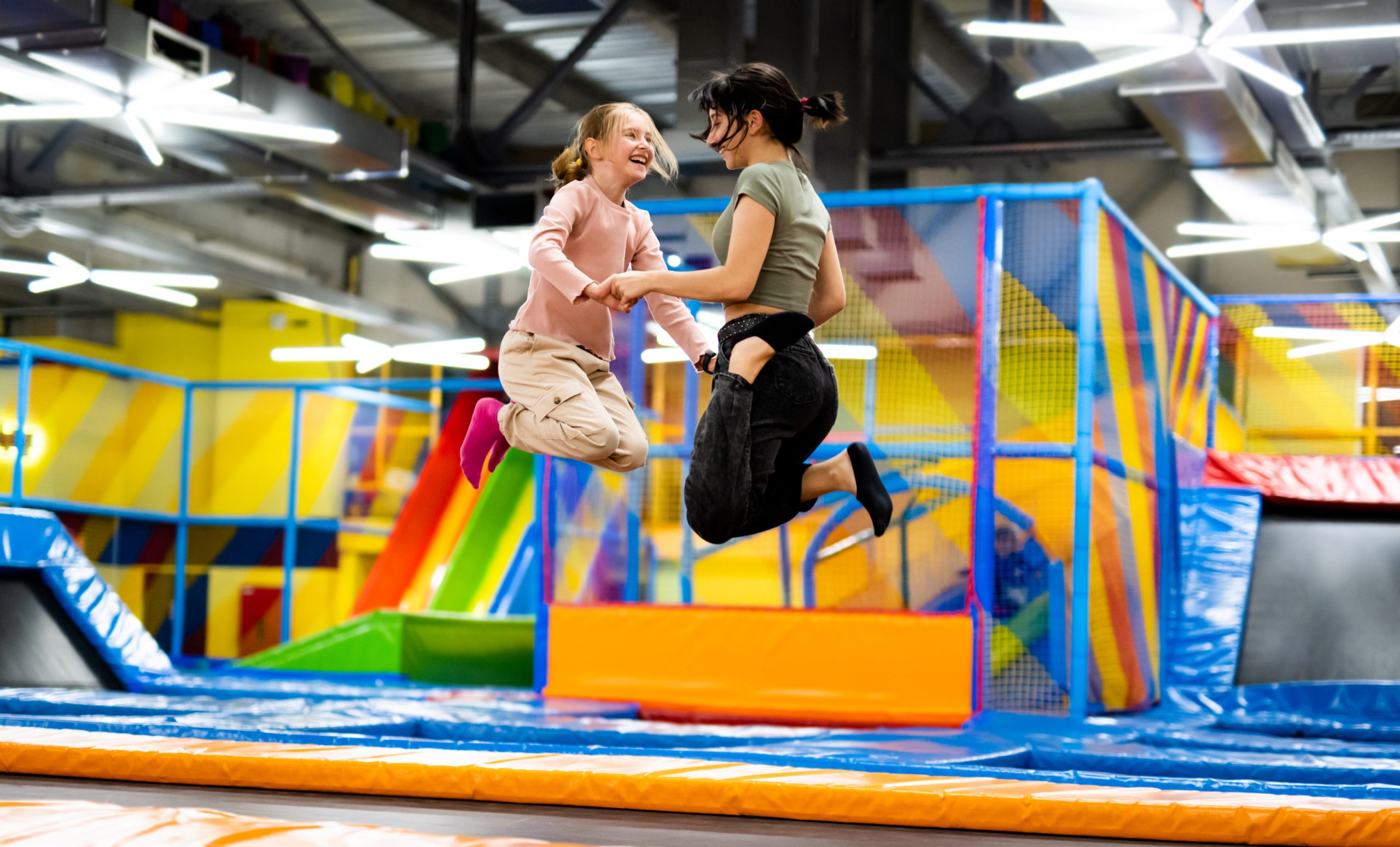When I was a kid, I spent my summers in the pool. The second the sun came out, I’d grab my towel and swim trunks and sprint through the neighborhood to our local swim club. As I got older, my love of swimming grew with me, so I joined a swim team and swam competitively until high school. Swimming was my sport of choice and, like most youth sports, it really improved my mental and physical health—and benefited my gross motor skills development.
What Are Gross Motor Skills?
In a nutshell, gross motor skills are a child’s ability to make controlled, whole-body movements like walking, running, and—you guessed it—swimming. Unlike fine motor skills, which use smaller hand muscles to complete fine-tuned movements like writing and typing, gross motor skills require the body’s larger muscles, like those in the arms, legs, and torso.
Why Are Gross Motor Skills Important?
A big part of growing up is learning how to live life independently, and gross motor skills make this possible. Like their finer counterpart, these functional skills give kids the tools necessary to accomplish everyday tasks without too much parental assistance.
Let’s think about it in terms of a morning routine. Before your kiddo hits the school hallway, they need to crawl out of bed, put clothes on, brush their teeth, eat a nutritious breakfast, and climb onto the school bus. Sounds simple, right? Well, not exactly. Without gross motor skills under their belt, these seemingly straightforward steps would require your child to put in a whole lot of effort!
In addition to getting ready for the day to begin, gross motor skills help kids (and adults) do everyday things like:
- getting from one place to another by walking, running, sliding, tiptoeing, or crawling
- sitting and standing upright
- bending or reaching for faraway things
- pushing and pulling heavy objects
- climbing both upwards and downwards
- throwing and catching objects like balls
- dancing (pretty vital, if you ask me)
How Can I Help My Child’s Gross Motor Skills Development?
While most children gradually develop their gross motor skills as they mature, some kids may need a little more assistance than others. The best way to help your child develop their gross motor skills is to help them actively use those skills. As with most things, practice makes perfect!
Here are some fun ways to get your child moving and actively developing their gross motor skills:
- Go on a short hike. There are few things better for gross motor skill development than a brief hike. It’s good for the soul, and stepping outside gives your child the chance to practice using their legs on uneven terrain. Who knows—if they’re anything like me, they may get so excited by the fresh air that they can’t help but run, giving their muscles some extra zest!
- Jump on a trampoline. Don’t worry—your kiddo doesn’t need to do any fancy flips to benefit from a trampoline; even bouncing helps. This is because the twisting and turning movements inherent to jumping activate nearly every stabilizing muscle in your child’s body. Trampolines are an important part of many Montessori classrooms for this very reason.
- Practice a martial art. Martial arts are about more than personal discipline and self-defense. Fighting styles like karate, tae kwon do, Brazilian jiu jitsu, and historical European martial arts require quite a bit of physical stability, so studying them gives your child the perfect training regimen for their gross motor skills. If your kiddo is looking for something like martial arts, but a little more peaceful, I recommend checking out tai chi.
- Get your groove on. Dancing uses the whole body, so it’s a fun and easy way to give your child’s gross motor skills some practice. You don’t need to teach them any fancy choreography; just grab your kiddo’s Troomi phone, pump up your family’s favorite tunes, and dance the day away.
- Play a round of hopscotch. When I taught first grade, I spent many a recess leaping across the hopscotch with my students. The game is fun, easy to understand, and a great way for kids to practice using their gross motor skills. There are as many ways to play hopscotch as there are letters in the alphabet, so try a few out and see which one you and your kids like best.
- Set up an obstacle course. Next time you and your kiddo have a free day, spend the afternoon creating an obstacle course together! Obstacle courses require all sorts of gross motor skills including running, jumping, crawling, pushing, lifting, and throwing. Completing a course also gets your child outside and away from the screen; talk about killing two birds with one stone!
- Play some catch in the backyard. Ah, catch. In addition to being a classic parent-child bonding activity, playing catch helps kids practice ball skills like throwing and—you’ll never guess the next one—catching. Just make sure to read our article on sports safety before your kiddo slides on their mitt.
- Play an active video game. Video games typically require fine motor skills more than gross ones, but this isn’t always the case. Active video games like Just Dance and Nintendo Switch Sports get kids using their whole body and developing their gross motor skills in the process. Before they play, take a second to make sure they have their wrist strap on for safety.
What Should I Do If My Child Has Motor Skill Delays?
Every child grows at a different rate, and some may grasp their gross motor skills later than others. However, some kids with neurological conditions or developmental delays may have trouble developing gross motor skills at all. If your child seems to be extremely far behind on their developmental milestones, it may be time to make an appointment with your pediatrician. They can help you know exactly what your child needs and can recommend helpful exercise regimens or physical therapists.
Troomi Helps Your Kids Stay Active
As you can tell, there are a ton of awesome ways that you can help your kiddo’s gross motor skills development. What doesn’t help, however, is spending too much time on a smartphone. If your kiddo would rather explore social media than wander the great outdoors, try switching to Troomi!
Smartphones from Troomi Wireless are made with your child’s well-being in mind. While other phones may influence your child to spend their time scrolling through social media or playing harmful games, Troomi phones encourage them to use their gross motor skills as they get curious about the world around them. If your curiosity has piqued (and I wouldn’t blame you), click here to learn a bit more about Troomi!
And don’t forget to come back to the Troomi blog for more parenting tips and tricks that you won’t want to miss!


